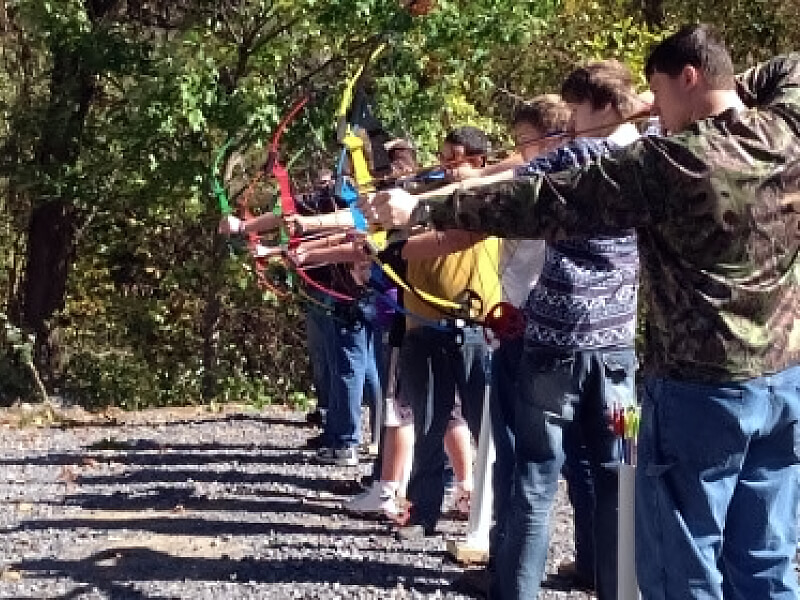Schools
2006 - PRESENT
Active Academics® (activeacademics.org)
Active Academics® is a free web-based resource developed to provide practical ideas to classroom teachers for integrating physical activity throughout the school day. Active Academics® currently provides lesson ideas for K-8 teachers that integrate physical activity with math, reading/language arts, science, social studies, health/nutrition, and physical education. Each content-based activity idea utilizes the Common Core Standards or the National Education Standards. Teachers can also choose “classroom energizers” that will provide simple ideas for giving students a “moving break” from classroom activities. Additionally, there are activity ideas for large-group settings, such as lunchtime and recess. The website also provides information about physical activity in general, as well as tips on successful integration of physical activity in the classroom. If your school is interested in hosting a professional development workshop for teachers, that is also provided by the Active Academics® team.
Check out all the lesson ideas and information at the Active Academics website.
ONGOING
Friday Adapted Physical Education Program
This program is a cooperative venture which provides a developmentally appropriate physical education/physical activity programming to approximately 80 school-aged students with various disabilities from Monongalia County Schools (WV) each semester. This program serves as an invaluable hands-on service-learning opportunity for WVU students enrolled in majors such as Physical Education and Kinesiology, Coaching and Performance Science, Recreation Parks and Tourism Resources, and students in the WVU Occupational Therapy Program. Further, the Friday Adapted PE program provides an outlet for community service for students at Saint Francis Central Catholic School.
News articles and related stories:
2013 - 2016
McDowell CHOICES (Children’s Health Opportunities Involving Coordinated Efforts in Schools)

The purpose of McDowell CHOICES (Coordinated Health Opportunities Involving Communities, Environments, and Schools) was to plan, implement, and evaluate an integrated approach for childhood and adolescent health related to improved physical activity participation using evidence-based strategies in the school setting. The Highmark Foundation awarded the WVU College of Applied Human Sciences a 6-month planning grant and a one-year implementation grant (2012-14) to develop Comprehensive School Physical Activity Programs (CSPAP) in all eleven schools in McDowell County. The schools served approximately 3,244 PK-12 students in McDowell County.


In efforts to maintain the positive momentum and awareness of physical activity, the McDowell CHOICES team successfully secured a federal grant from the U.S. Department of Agriculture for the amount of $61,000 to support continued after-school programming for one additional academic year.
To learn more about McDowell CHOICES, visit our McDowell CHOICES website.
View the McDowell CHOICES Press Release.
Kristjansson, A. L., Elliott, E., Bulger, S., Jones, E., Taliaferro, A. R., & Neal, W. (2015). Needs assessment of school and community physical activity opportunities in rural West Virginia: The McDowell CHOICES planning effort. BMC Public Health, 15(1), 327.
2011 - 2014
Greenbrier CHOICES (Children’s Health Opportunities Involving Coordinated Efforts in Schools)

The Greenbrier CHOICES Project was a multi-site intervention targeting two middle schools in Greenbrier County, WV. Greenbrier CHOICES was funded by a Carol M. White PEP Grant from the US Department of Education. The three-year program (2011-2014) aimed at developing, implementing, and evaluating an integrated approach for adolescent health using complementary intervention strategies and settings (school, community, and health care). The program targeted the total student population in the two middle schools (grades 6-8) in Greenbrier County (approximately 1250 children).
The school component of Greenbrier CHOICES focused on the development of a standard-based, middle school curriculum in physical education that incorporated culturally-relevant lifestyle activities that utilized available community and natural resources. In addition to the enhanced physical education curriculum, comprehensive school physical activity programming in both middle schools was incorporated. The community component extended the curriculum by increasing family access to alternative educational experiences focused on healthy eating and developmentally appropriate physical activity. The health care component complemented the efforts in the school and the community by providing a mechanism for identifying at-risk adolescents (overweight and obese) for purposes of prevention, treatment, and referral.
Jones, E., Braga, L., Bulger, S., Elliott, E., Cho, K., & Lilly, C. (2020) Initial findings of a multi-component school health intervention in rural Appalachia: The Greenbrier CHOICES Project. Health Education & Behavior.
Braga, L. & Elliott, E. (2018) Culturally and Geographically Relevant Content in Secondary Physical Education: Lessons from the Greenbrier CHOICES Project. Journal of Physical Education, Recreation, & Dance.
2004 - 2012
Schools on the Move

From 2004-2012, West Virginia on the Move’s Schools on the Move program helped West Virginia PreK-12 public or private schools promote physical activity by awarding $5000 to up to five schools a year through a competitive grant cycle. School projects supported a Comprehensive School Physical Activity Program approach, focusing on quality physical education, physical activity before, during or after school, parent and community involvement, staff wellness, and/or active transportation.
Initial funding for the project was provided by the Claude Worthington Benedum Foundation, and was later provided by the West Virginia Children’s Hospital Foundation. Additional support was provided by the WV CARDIAC Project and the End Childhood Obesity (ECHO) Race.




